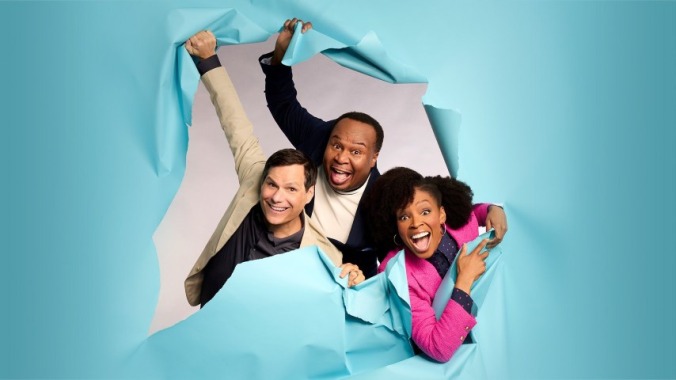Have I Got News For You Doesn’t Have A Mean Bone In Its Body

There was a moment watching the US premiere of Have I Got News For You where I truly felt insane. The panelists, consisting of host Roy Wood Jr., team captains Amber Ruffin and Michael Ian Black, along with guests Robin Thede and libertarian writer Matt Welch, are shown four photos and asked to guess the odd one out. We see photos of Jack Black (played a teacher on-screen), Tim Walz, Lin-Manuel Miranda, and Jon Hamm (all three of whom were actually high school teachers). The answer is revealed, and the audience reacts with the sort of politely intrigued “ohhhh” that someone might have if they were told that the 10th President John Tyler still has a living grandson. It’s not laughter, it’s not even clapter (the comedy phenomenon where jokes receive applause because the audience agrees with the comic, but not laughter). It’s more the reaction you have to being told a fun fact about a koala. Pleasant, yes. Informative, yes. But not really a joke. Why would this be a reaction you’re aiming for on a show that wants to be funny?
While there are things in CNN’s latest attempt to import the concept of the British panel show to US TV that work, Have I Got News For You still appears to be missing one crucial element: meanness. The UK show it’s based on is a long-running British institution (currently about to start its 68th season—yes I know British television seasons are three episodes and a Christmas special long). It has lasted so long precisely because of its way with a cutting remark. While often justifiably critiqued for the overwhelming whiteness of its panels and its lack of changing with the times, it is undeniable that the British version of HIGNFY has a healthy disdain for the politics it comments on. You have to assume that about a program that was once sued for calling a sitting MP a “conniving little shit.” In contrast, the US version seems to want to point out how absurd our political sphere is, but not comment on it with any meaningful passion. Later on in the premiere, Thede makes a joke about vice-presidential candidate JD Vance’s name change, which happened during his childhood when he was adopted by his mom’s new husband. Upon that being revealed to her, she responds, “Oh, now I’m mean.” While I don’t think every show has to be out here engaging in 15–minute Last Week Tonight rants, I do think we don’t have to care about the feelings of a man who called that same family apathetic and lazy in the memoir that made him regrettably famous.
-

-

-

-

-

-

-

-

-

-

-

-

-

-

-

-

-

-

-

-

-

-

-

-

-

-

-

-

-

-

-

-

-

-

-

-

-

-

-

-








































